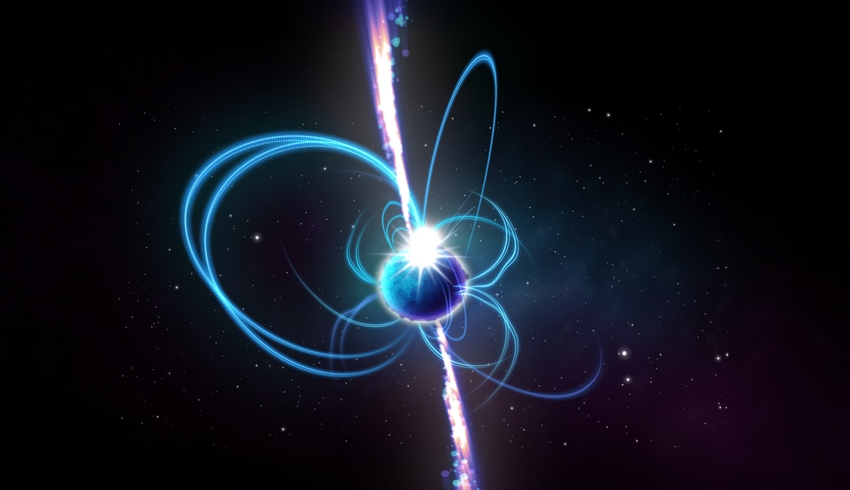Honours student Tyrone O’Doherty used the Murchison Widefield Array (MWA) telescope in outback WA and a new technique he invented.
Already, the discovery has been covered by NBC in the US, the Metro in the UK, Al Arabiya in the Middle East and many ANZ news sources.
The wider team who discovered the phenomena describe it as one of the brightest radio sources in the sky and think it’s only around 4,000 light years away from Earth. Their early hypothesis is that it could be a neutron star or a white dwarf – collapsed cores of stars – with an ultra-powerful magnetic field.
“It’s exciting that the source I identified last year has turned out to be such a peculiar object,” said O’Doherty, who is now studying for a PhD at Curtin.
“The MWA’s wide field of view and extreme sensitivity are perfect for surveying the entire sky and detecting the unexpected.”
Astrophysicist Dr Natasha Hurley-Walker, from the Curtin University node of the International Centre for Radio Astronomy Research (ICRAR), led the discovery team.
“This object was appearing and disappearing over a few hours during our observations,” she said.
“It was kind of spooky for an astronomer because there’s nothing known in the sky that does that.”
Objects that turn on and off in the universe are known as ‘transients’ and ICRAR-Curtin astrophysicist Dr Gemma Anderson said that when studying the objects, “You’re watching the death of a massive star or the activity of the remnants it leaves behind”.
“Slow transients” – like supernovae – might appear over a few days and disappear after a few months, while “fast transients” – such as a type of neutron star called a pulsar – flash on and off within milliseconds or seconds.
Dr Anderson said finding something that turned on for a minute, however, was “really weird” and added that the mysterious object emitted highly polarised radio waves suggesting it had a powerful magnetic field.
Dr Hurley-Walker said the observations match a predicted astrophysical object called an “ultra-long period magnetar”.
“It’s a type of slowly spinning neutron star predicted to exist theoretically,” she said.
Repeating Transient Animation from ICRAR on Vimeo.
“But nobody expected to directly detect one like this because we didn’t expect them to be so bright.
“Somehow, it’s converting magnetic energy to radio waves much more effectively than anything we’ve seen before.”
Dr Hurley-Walker is now monitoring the object with the MWA to see if it switches back on.
“If it does, there are telescopes across the southern hemisphere and even in orbit that can point straight to it,” she said.
Dr Hurley-Walker plans to search for more of these unusual objects in the vast archives of the MWA.
“More detections will tell astronomers whether this was a rare one-off event or a vast new population we’d never noticed before,” she said.
MWA director Professor Steven Tingay said the telescope is a precursor instrument for the Square Kilometre Array – a global initiative to build the world’s largest radio telescopes in WA and South Africa.
“Key to finding this object, and studying its detailed properties, is the fact that we have been able to collect and store all the data the MWA produces for almost the last decade at the Pawsey Research Supercomputing Centre. Being able to look back through such a massive dataset when you find an object is pretty unique in astronomy,” he said.
“There are, no doubt, many more gems to be discovered by the MWA and the SKA in coming years.”

Adam Thorn
Adam is a journalist who has worked for more than 40 prestigious media brands in the UK and Australia. Since 2005, his varied career has included stints as a reporter, copy editor, feature writer and editor for publications as diverse as Fleet Street newspaper The Sunday Times, fashion bible Jones, media and marketing website Mumbrella as well as lifestyle magazines such as GQ, Woman’s Weekly, Men’s Health and Loaded. He joined Momentum Media in early 2020 and currently writes for Australian Aviation and World of Aviation.

